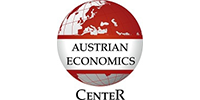Understanding President Trump’s China strategy
In his second term, United States President Donald Trump has surrounded himself with self-proclaimed “China hawks,” advisers, and officials eager to outmaneuver Beijing in the ongoing U.S.-China rivalry. However, a series of mixed signals, vague actions and unfilled key roles, such as critical ambassadorships and senior agency positions, have left observers both at home and abroad puzzled about President Trump’s strategy toward China. The absence of clear, detailed policy frameworks, beyond a flurry of executive orders, has only deepened the ambiguity surrounding the administration’s approach.
Few parties are as perplexed about how to navigate President Trump’s approach to China as China is itself, which has responded with its own array of mixed messages and actions, mirroring the U.S. administration step for step.
This tit-for-tat pattern has intensified in recent weeks, with Beijing’s latest moves to counter U.S. restrictions on high-tech exports. China announced restrictions on the export of rare earths and other critical materials to strengthen its trade position ahead of a meeting between Presidents Trump and Xi Jinping. The curbs represented an escalation in China’s efforts to control its exports, emulating Washington’s bans on Chinese access to advanced chips and manufacturing tools.
The two leaders met on the sidelines of the Asia-Pacific Economic Cooperation summit in Gyeongju, South Korea. This was their first in-person meeting since the start of President Trump’s second term. In a game of brinkmanship, both sides announced deals including a lowering of U.S. tariffs, the lifting of restrictions on rare earth exports and a Chinese pledge to renew soybean purchases from American farmers.
From an outside perspective, what might seem like chaos – both to onlookers and some insiders – reflects President Trump’s typical approach to major strategic issues: improvisational, opportunistic and often disruptive. What is becoming evident is that both sides in this ongoing struggle have braced themselves for a prolonged period of competition, warily keeping a close watch on each other.
Facts & figures: U.S.-China tariffs, 2025

What the U.S. strategy is not
In the first 10 months of President Trump’s tenure, it has become clear that the administration is unlikely to issue a definitive strategy statement akin to the “unconditional surrender” declared during World War II or the “containment” policy of the Cold War. Here is what he is not doing.
The Great Divorce. The idea of a hard decoupling from China, advocated by some of the president’s supporters and members of his administration, suggests that the U.S. should drastically reduce its economic ties with Beijing while intensifying military containment and political isolation. This is not the path the White House is taking. In fact, the president kicked off his second term by proposing another trade deal with China and has increased tariff and trade pressures more extensively on U.S. allies and partners than during his first term.
Furthermore, President Trump’s trade war has strained relations with traditional allies and pushed some toward China. For instance, tensions with the Indian government, a crucial U.S. partner in countering Beijing, have grown. Recent disputes between Washington and New Delhi have escalated over trade disputes and punitive tariffs stemming from India’s purchase of Russian oil. There was concern that this situation may drive India closer to China and Russia, potentially undermining the Quad alliance and the security framework in the Indo-Pacific region. Nevertheless, the new U.S. ambassador has been warmly welcomed in New Delhi. Both countries signed a new 10-year defense cooperation agreement and expressed a commitment to restoring relations.
At the same time, Washington’s stance on Taiwan – a key flashpoint in the ongoing military rivalry between America and China – is becoming increasingly unclear. Recently, the U.S. reaffirmed that its commitments to Taiwan were up for negotiation with Beijing. The U.S. president stated he did not discuss the issue with his Chinese counterpart in the face-to-face meeting, a strong sign that Washington is not willing to compromise on the Taiwan status quo, despite statements from Beijing demanding American support for unification with China.
Notably, the U.S. president also extended the deadline for banning the Chinese social media platform TikTok in the U.S., despite it being mandated by law. (TikTok’s U.S. operations are set to be acquired by a U.S. group led by Larry Ellison and Oracle, pending Chinese approval.) Recently, he announced that he wants to allow 600,000 Chinese students into American universities, seemingly disregarding one of the main concerns of his conservative base about excessive Chinese influence and presence in the U.S.
The G2 deal. The administration’s approach is certainly not focused on detente, unlike the Nixon-Kissinger efforts during the Cold War to establish a mutually beneficial relationship between the U.S. and the Soviet Union.
Even as it negotiates a trade deal with China, the U.S. has made it clear that it views China as a long-term military threat. This perception has prompted the U.S. to strengthen its nuclear arsenal, ramp up competition in space and develop a national air and missile defense system known as the “Golden Dome.” Washington is also urging major corporations to reduce their business dealings in China. The emphasis on enhancing cyber defenses and countering espionage efforts targeted at China is growing, and the U.S. is also pressuring its allies and partners while stepping into traditional spheres of Chinese influence, particularly in Central Asia. In October, the U.S. Special Envoy and Deputy Secretary of State visited Central Asia, an unusually strong show of American interest in engaging in the region.
America, the island. President Trump has frequently faced criticism for being an isolationist, a label that continues to stick even though his policies during his first term did not align with the “restrainer” stance advocated by some of his supporters and administration officials. In his second term, the president has shifted his focus more toward hemispheric and homeland security, yet he has also reaffirmed his commitment to NATO. He has remained actively engaged in the Middle East, recently facilitating a ceasefire between Israel and Hamas. He has also shown renewed interest in Africa and negotiated a peace deal in the South Caucasus between Armenia and Azerbaijan.
Divide and conquer. There are no indications that the U.S. is genuinely interested in or capable of orchestrating a “reverse-Kissinger” to peel away any of China’s key allies – Russia, Iran or North Korea. Instead, it seems the U.S. is more likely to focus on exploiting internal rifts among these nations and applying external pressure to diminish the effectiveness of their alliance against U.S. interests.
The burden of global leadership
The U.S. strategy is neither aimed at completely undermining nor dismissing Beijing’s growing power and influence globally, nor at dismissing its effects on American interests. However, understanding the intentions behind U.S. actions has become increasingly challenging due to the administration’s multiplicity of activities worldwide.
Some anticipated that President Trump would implement the long-awaited “pivot” to Asia, focusing primarily on countering China by reallocating U.S. military, economic and political resources to the Indo-Pacific region. This has not happened. Some believe that this shift will eventually be reflected in the Pentagon’s force posture review and national defense strategy.
Taking decisive action in other regions does not mean this administration ignores China as its primary global challenge. After all, Beijing’s impact, particularly its harmful activities aimed at weakening U.S. power and interests, is undoubtedly felt worldwide.
This situation mirrors the global challenges the U.S. faced during World War II. Although the Allies agreed to “defeat Germany first,” America directed more troops and resources to the Pacific in the war’s first year. Stabilizing that region was seen as a critical step before gathering enough forces for the eventual invasion of Europe.
Today, both Europe and the Middle East are as important to the U.S. as Asia is. Washington would struggle to effectively confront Beijing in Asia if, simultaneously, China, Russia and Iran were running amok across Eurasia and the Middle East.
That said, European and Middle Eastern allies are often critical of the U.S., claiming they are not receiving preferential treatment from the Trump administration and are seeking greater collaboration on China policy. This does not indicate indifference to allies but reflects the president’s belief that, while he needs allies, he will pressure them to become the allies he requires, not necessarily the ones he currently has. This attitude extends globally to the Indo-Pacific as well, where President Trump is urging for greater contributions to collective defense, increased self-reliance, more balanced trade and responsible economic and energy policies.
Some might see this flurry of activity as a distraction from the China policy, but it could also yield stronger allies more resilient to Chinese pressure, while shrinking the space for malicious activities by Beijing and its “no limits partners,” such as Russia.
Complexity in Asia
Ironically, the U.S. currently has stronger strategic partnerships in Europe and the Middle East due to ongoing operations and engagement related to two wars. In contrast, several key Indo-Pacific posts remain without confirmed U.S. ambassadors or counterparts in the State and Defense departments to engage with. The U.S. National Security Council staff plays a limited role in policymaking, leaving many countries uncertain about the future of American leadership and how Washington will interact with China.
In another mark of President Trump’s flip-flop diplomacy, he signed an important deal with Australian Prime Minister Anthony Albanese after limited engagement in Asia. At the same time, on his latest trip, he also secured impressive agreements with South Korea and Japan, showing he is just as committed to deal-making in Asia as in other regions. The president’s recent trip will help alleviate concerns that Asian allies are being sidelined, but the lingering concern of how the U.S.-China rivalry plays out over time will continue.
This unpredictability greatly contributes to concerns that U.S.-China policy is unraveling, as the White House appears to fluctuate between engaging with, ignoring or antagonizing Beijing.
Scenarios
Most likely: Trump continues with his plan to outpace China
President Trump’s policy, rather than isolating, defeating, accommodating or overlooking China, appears, from his collective actions, to be focused on outcompeting China – emphasizing the buildup of military capacity, strengthening the economy, reducing strategic dependencies and gradually limiting space for China to establish hard spheres of influence that encroach on U.S. interests and security. The goal is not to create an American hard sphere of influence, but to deny China a sphere of influence that threatens the U.S.
This approach diverges from traditional strategies of containment or detente. Instead, it appears to prioritize expanding U.S. freedom of action, aiming to proactively shape the competitive landscape rather than merely reacting to Chinese initiatives. President Trump views his plan as neither risk-averse nor reckless, but risk-informed. The most likely scenario is that President Trump will continue with this approach for the rest of his term.
To gauge U.S. progress, it is essential to monitor short- and mid-term developments that President Trump identifies as critical to securing a strategic advantage over China. This includes areas such as the commercial and military space, artificial intelligence, quantum technologies, life sciences, energy production, strategic deterrence and conventional military capabilities. Achieving these goals will require collaboration with U.S. allies in Europe, the Middle East and Indo-Pacific.
President Trump will continue to work on reducing dependencies on foreign sources for critical resources, advanced manufacturing such as pharmaceuticals and shipbuilding, and enhancing hemispheric security, including efforts against transnational crime, illegal migration and the Arctic.
Both Washington and Beijing will view any accommodations as temporary measures, with neither side trusting the other or expecting agreements to endure.
Wild cards
President Trump’s on-again, off-again engagement with Beijing may confuse and even antagonize his base of supporters who want him to be tough on China. The White House can mitigate this if it can deliver economic growth, security and political strength at the polls.
The reactions of friends and allies will remain unpredictable. With uncertainty surrounding U.S. commitment and strategy, they may struggle to define their own approach to the challenge posed by China. As a result, they might find it difficult to work alongside Washington on the issues related to Beijing.
As long as American power seems to be increasing compared to China’s, allies and partners will likely ultimately favour Washington.
Also likely: Beijing’s strategic moves will challenge Washington’s influence
China will persist in its strategic competition despite facing its own diplomatic, domestic and economic challenges. There is not enough pressure from the U.S. and other countries to compel it to stop. While China may not directly confront the U.S., it has numerous opportunities to subtly challenge American influence, testing for weaknesses and seeking advantages without risking a full-scale conflict.
The next three and a half years will be tumultuous. Unless a Black Swan event occurs, the rivalry between the U.S. and China will resemble a horse race that is still in progress. Nonetheless, this should allow the U.S. to maintain a secure and robust position.
This report was originally published here: https://www.gisreportsonline.com/r/u-s-china-strategy/





























